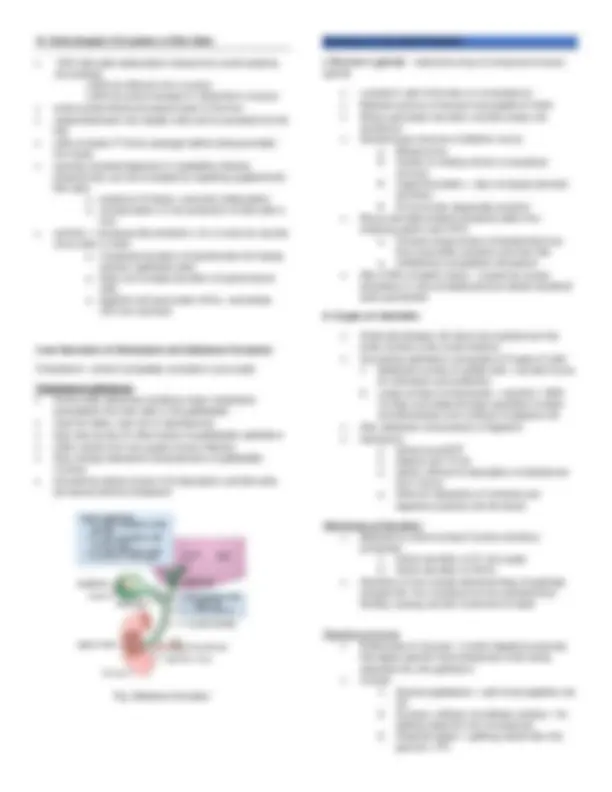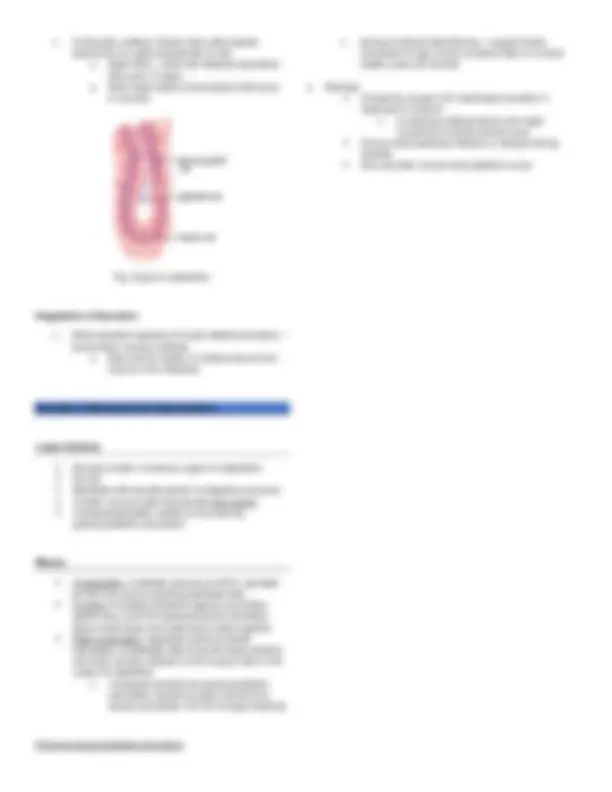Bile Secretion
- Secreted by liver
- (600-1000 mL/day)
I. Functions of bile:
1) Fat digestion and absorption – due to bile acids
Bile acid functions:
a) emulsification of large fat particles into tiny
minute particles
– increase in surface area allows for easier
attack by lipase enzymes secreted in pancreatic
juice
b) aid in absorption of digested fat end products
thru the intestinal mucosal membrane
2) Serves as a means for excretion of several important waste
products from the blood
II. Physiologic Anatomy of Biliary Secretion
Fig. Control of secretion
2 Stages of Bile Secretion by the Liver:
1) Initial portion
- secreted by hepatocytes into minute bile canaliculi
(between the hepatic cells)
- contains large amounts of bile acids, cholesterol, other
organic constituents
2) Bile
i) Flows in the canaliculi towards the interlobular septa
ii) In the interlobular septa, the canaliculi empty into terminal
bile ducts → progressively larger ducts → hepatic duct →
common bile duct
In the bile ducts
- a second portion of secretion is added to the initial
bile
- Second portion/secretion – watery solution of sodium
and bicarbonate ions (secreted by epithelial cells
lining the ductules and ducts)
o Sometimes increases total quantity of bile by
as much as 100%
o Stimulated especially by secretin
o Release of additional HCO3- to supplement
HCO3- in pancreatic secretion
o Bicarbonate neutralizes acid that empties
into duodenum from stomach
iii) After the ducts, bile either:
iii.a) empties into duodenum directly; or
iii.b) diverted thru cystic duct → gallbladder (storage
for minutes to several hours)
Fig. Bile acid stimulation/inhibition
Storing and Concentrating Bile in the Gallbladder
Bile – continually secreted by the liver cells
▪ Normally stored in gallbladder until needed by
duodenum
• Gallbladder maximum volume capacity = 30-
60 mL
• As much as 12 hours of bile secretion (~450
mL) can be stored. How?












